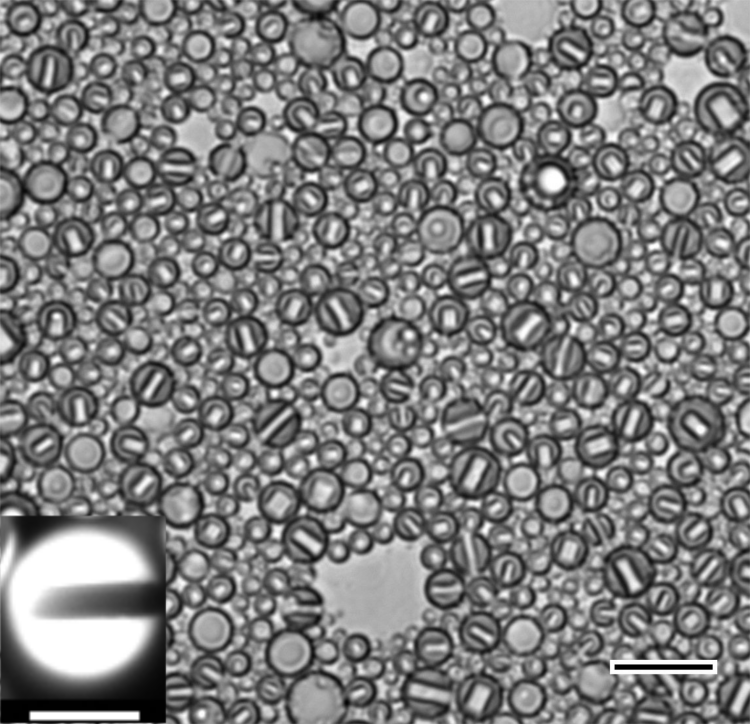New paper from mechanical researchers explores endoskeletal droplet vaporization

Gazendra
Researchers from the Paul M. Rady Department of Mechanical Engineering have found a new way of understanding the vaporization behavior of mixtures. The work is described in “Vaporizable Endoskeletal Droplets via Tunable Interfacial Melting Transitions,” a paper published in Science Advances this April.
Liquid emulsion droplet vaporization is important for a variety of sensing and imaging uses, particularly in the medical ultrasound field. Notable applications include contrast-enhanced ultrasounds and targeted drug delivery.
The new paper explores a completely new approach to control vaporization behavior that allows those applications through the use of an endoskeleton. Essentially, researchers are turning a liquid into a vapor, uniquely altering the vaporization temperature of the liquid in the tiny droplets by the presence of different solids. This allows for better control when the liquid component changes into a vapor.
Fifth-year PhD candidate in mechanical engineering Gazendra Shakya was the lead author on the paper. He answered questions about the work, possible applications and how it relates to the broader research from professors Mark Borden and Xiaoyun Ding.
Question: What does this paper show?
Answer: “In general, the paper shows a new way of understanding vaporization behavior of mixtures and the possibility of controlling the thermal stability of those materials by using different mixtures. We used perfluoropentane as our vaporizable species, but theoretically this technique should work with any other compatible material pair as well. Also, it shows some interesting-looking droplets that have not been seen before.”
Q: What are some possible applications of this work?
A: “With these droplets, we are vaporizing them to form microbubbles. So they could be used for all of the applications that microbubbles are currently being used and studied for. For example, contrast-enhanced ultrasound, targeted drug delivery and destruction of a tumor by using heat, to name just a few. Droplets are, in some cases, superior to microbubbles as they can be more stable. Moreover, because of the unique relationship between the interfacial melting of the solid and the vaporization of the liquid phase, these droplets could, in principle, be used for other interesting applications such any kind of radiation treatment where there is increase in the temperature.”
Q: Why was the work interesting to you?
A: “The most interesting thing for me about this project is its counter-intuitiveness. We don't usually associate melting of a solid with vaporization of another liquid. It's very interesting that we were able to show how melting of a solid phase is responsible for vaporization of a totally different liquid phase.
Also, the fluorocarbon/fluorocarbon droplets we generated are very interesting in themselves. There is a hockey-puck-shaped solid embedded inside every droplet. We had never seen such interesting micron sized structures before. Additionally, the tunability of the vaporization temperatures of perfluoropentane that we show with this study was very interesting as well. Finally, we were trying to explain a new phenomenon that had not been observed or explained before.”

Q: What questions are still left to explore in this research? Will you be working on this project further?
A: “I will be working on this project further for my thesis, and I am confident the team will continue this research even after I finish.
We are talking about a novel droplet architecture. We don't really know much about them right now, so there are many questions that are still unexplored. Questions regarding the mechanism of the formation and stability of the puck shape I mentioned, the rotation of the disks, the control and reorientation of the disks, the vaporization behavior of the fluorocarbon/hydrocarbon droplets, and then the shelf life and circulation stability of these droplets could be explored.
With professor Ding's expertise in microfluidics, we are generating these droplets using a microfluidic technique that has given us the ability to generate very uniform droplets and with that, we have come across some very interesting properties which we are exploring.”
Other CU Boulder authors on this paper are Associate Professor Hendrik Heinz and graduate students Samuel E. Hoff and Shiyi Wang from the Department of Chemical and Biological Engineering.

